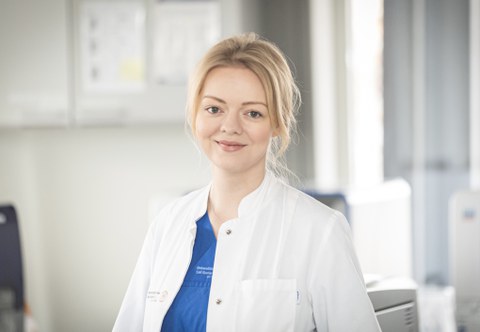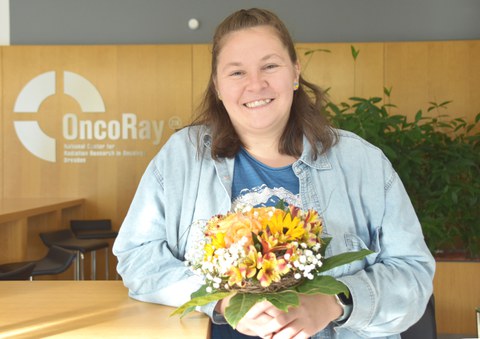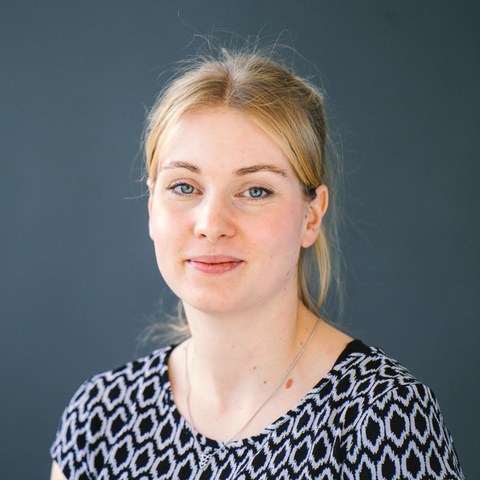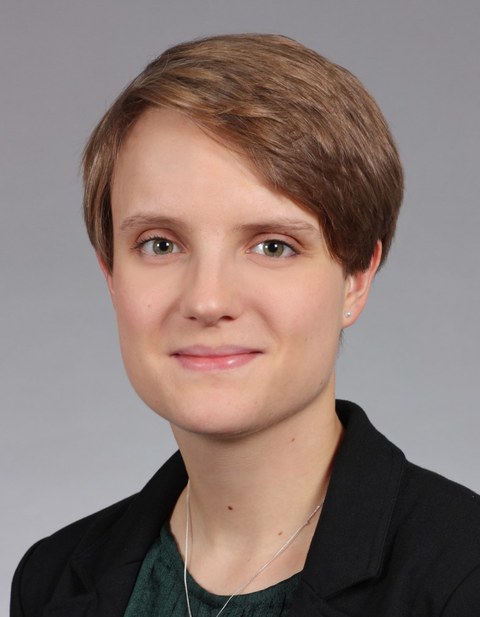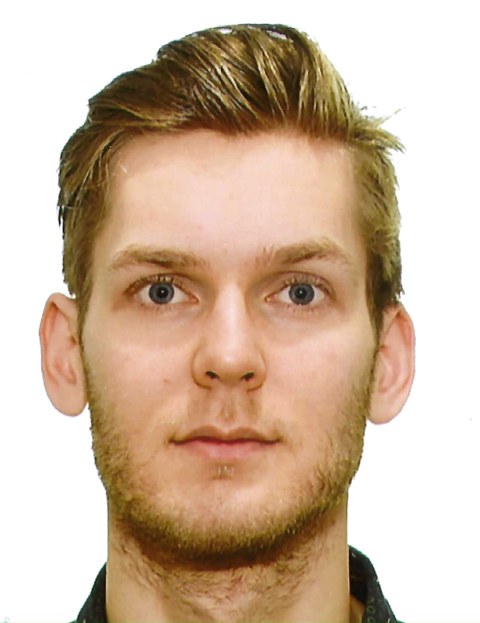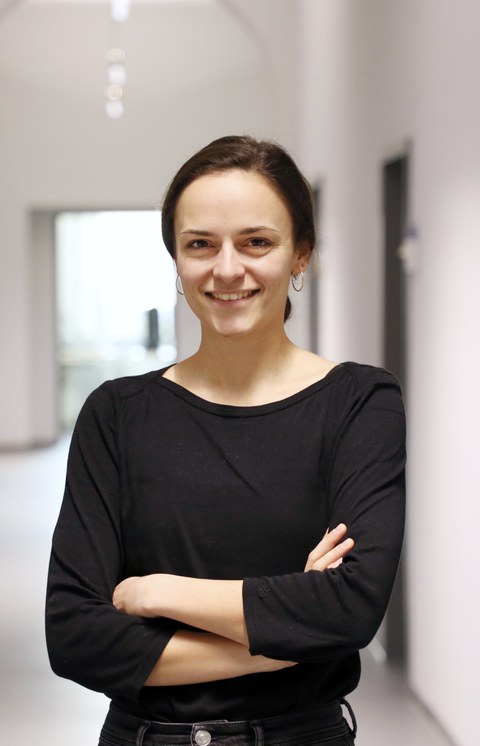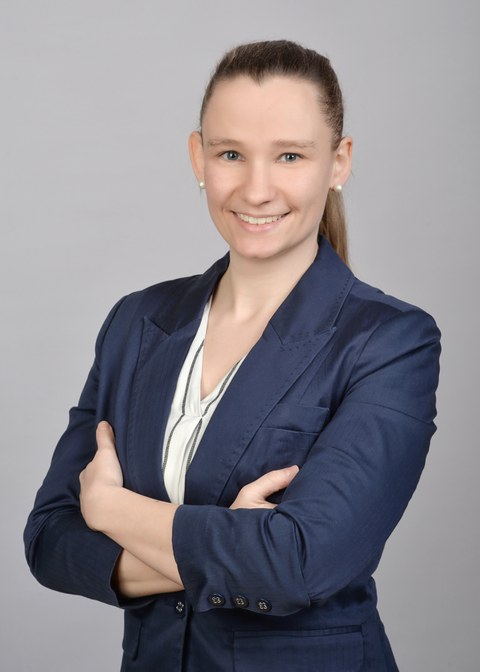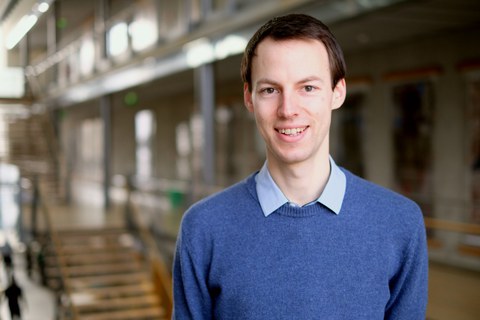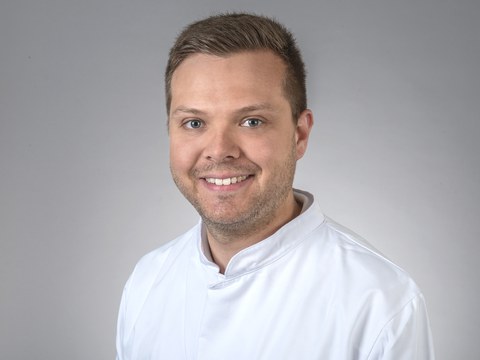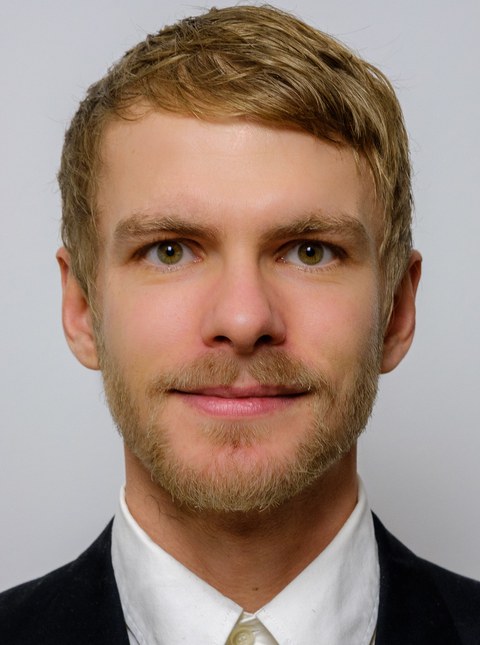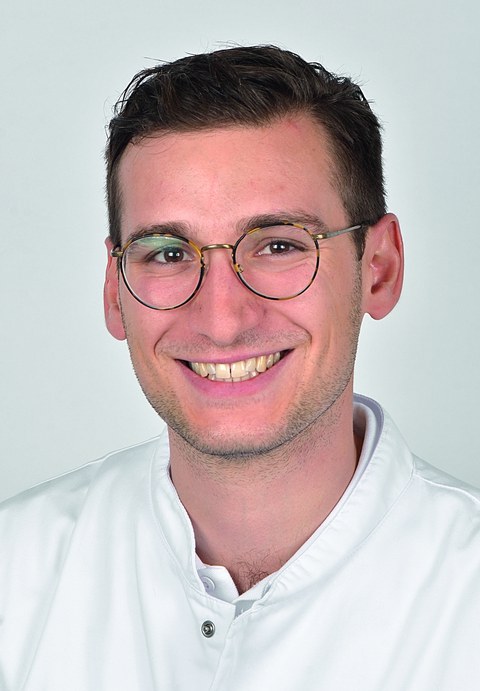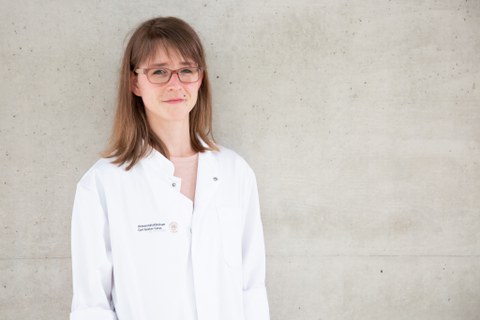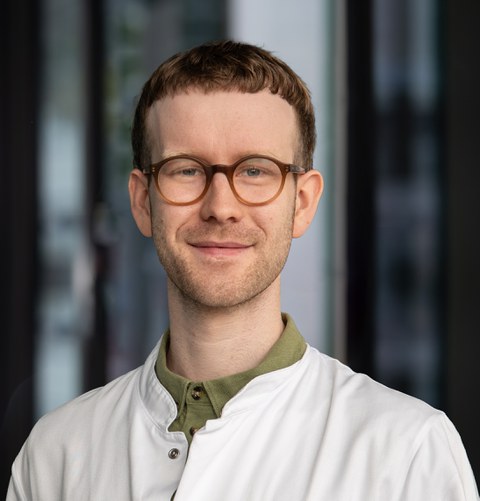Funded scientists 2024/2025
Table of contents
- Funded projects 2024/2025
- Dr. med. Anne-Marlen Ada
- Dr. med. Julia-Annabell Georgi
- Dr. rer. medic. Ielizaveta Gorodetska
- Dr. rer. nat. Juliane Hammer
- Dr. rer. nat. Maria Knyrim
- Dr. med. Hanna-Sophie Lapp
- Dr. med. Jan Matschke
- Dr. med. Hannah Sophie Muti
- Dr. med. Kristin Riedel
- Dr. rer. nat. Jan Rix
- Dr. med. Felix Schön
- Julia Schönfeld
- Dr. med. Tony Sehr
- Dr. med. Julian Steininger
- Dr. med. Carina Wenzel
- Dr. med. Maximilian Werner
- Funded projects 2024/2025
Funded projects 2024/2025
Dr. med. Anne-Marlen Ada
Project title: Characterization of the chromosomal instable gastric cancer subtype using an organoid model system
Structural unit: Department of internal Medicine I / Department of Visceral, Thoracic and Vascular Surgery
Project description
Gastric cancer ranks the fifth most common and the third leading cause of cancer related deaths worldwide. The Cancer Genome Atlas (TCGA) consortium developed a molecular classification system based on observed mutational patterns and altered signalling pathways. With this knowledge gastric cancer could be classified into the chromosomal instable (CIN), genomic stable (GS), Epstein-Barr virus associated (EBV) and microsatellite instable (MSI) subtype. Interestingly, almost 50 % of gastric cancer cases can be assigned to the CIN subtype showing the following potential driver mutations: TP53KO, KRASG12S, CDKN2AKO, APCKO and Smad4KO.
Gastric tumours carry at least 100 different mutations, making it difficult to analyse the specific effects of each mutation. For this reason, we genetically engineered human CIN models with the potential driver mutations and altered signalling pathways on a defined genetic background. Using a two vector CRISPR/Cas9 system, mutations of the CIN subtype were introduced into wildtype human gastric organoids. Organoids are three-dimensional cell cultures that are able to self‐renew and self‐organize, contain various cell types as well as nicely recapitulate their tissue of origin. We generated four different CIN organoid models with the aforementioned driver mutations. The generated CIN organoid models will be characterized regarding their histological changes, their proliferation rate and possible resistance to chemotherapeutics. To investigate differences in tumorigenicity, invasiveness and metastasis, the organoid models will be orthotopically transplanted into mouse stomachs and tumour progression will be followed using in vivo imaging.
Overall, the analysis of the generated CIN models will improve our understanding of mutation mediated effects in gastric cancer.
Link to the website: https://www.uniklinikum-dresden.de/de/das-klinikum/kliniken-polikliniken-institute/vtg/forschung/Forschungslabor/ag-stange
Dr. med. Julia-Annabell Georgi
Project titel: Platelet transcriptome analysis in patients with chronic immune thrombocytopenia (ITP) using RNA sequencing
Structural unit: Department of internal Medicine I
Project description
Immune thrombocytopenia (ITP) is an immune-mediated hematologic disorder in which autoantibody-mediated platelet destruction leads to bleeding diathesis. The pathophysiology of ITP is complex and not yet fully understood. Recent insights suggest that platelets, traditionally predominantly seen as targets in the autoinflammatory processes, may actively contribute to both onset and progression of ITP. The anucleate platelets are adept at influencing immune responses through their complex transcriptome, comprising a range of RNA molecules such as mRNA, microRNAs (miRNAs), long non-coding RNAs (lncRNAs), pre-mRNA, and circular RNA. The aim of this project is to gain insights into potential functional alterations of platelets in ITP by analyzing the RNA expression patterns of platelets from patients with chronic ITP. The identification of these disease-specific changes could shed light on pathogenetically relevant signaling pathways and pave the way for the discovery of novel therapeutic targets.
Dr. rer. medic. Ielizaveta Gorodetska
Project title: Overcoming melanoma radiation resistance by improving sensitivity to radiotherapy
Structural unit: OncoRay
Project descriptionMelanoma is the deadliest type of skin cancer and emerges by the malignant transformation of pigment-forming melanocytes. It represents one of the most highly mutated malignancies. It is traditionally viewed as a radioresistant tumor, which may explain the limited role of radiation therapy in this disease. Improving radiosensitivity may widen the clinical utility of this important therapeutic modality. This research proposal aims to generate and characterize radioresistant variants of melanoma cell lines with different genetic backgrounds. To discover the molecular mechanisms of melanoma intrinsic radiation therapy resistance, we aim to first identify candidate genes by utilization of RNA-sequencing with further functional validation, metabolomics profiling and drug testing for radiosensitization. Moreover, melanoma metastasizes to the brain in up to 80% of cases, a location that is largely inaccessible to standard therapies. Targeted therapy and immunotherapy are currently the most successful treatment regimens against metastatic melanoma but remain inefficient for most brain metastases, in part due to limited penetration through the blood-brain barrier. Radiotherapy is a treatment option largely neglected due to intrinsic resistance of melanoma to irradiation. However, sensitizing melanoma cells to irradiation could overcome intrinsic resistance and open new possibilities of treating metastatic melanoma, especially for lesions inaccessible for current therapies. The long-term goal is to rapidly transfer previously acquired knowledge for applying radiation therapy not only in palliative settings but also as a curative strategy.
Dr. rer. nat. Juliane Hammer
Project title: In vivo analysis of retinal cell transplantations using ultra-high resolution optical coherence tomography
Structural unit: Center for Regenerative Therapies Dresden (CRTD)
Project description
More than 2.2 billion people worldwide are affected by visual impairment or vision loss with retinal degenerative diseases such as age-related macular degeneration or retinitis pigmentosa being one of the leading causes. These conditions are characterized by the progressive loss of retinal neurons, especially the light-sensing photoreceptors, often accompanied by the degeneration of the supporting retinal pigment epithelium that is located adjacent to the photoreceptor cells.
Preclinical studies have shown that cell replacement therapies are a promising approach to treat these diseases. We are currently working on a novel approach transplanting human stem cell-derived photoreceptors and retinal pigment epithelium sequentially in mouse models of retinal degeneration. These co-transplantations involve a multi-step procedure and while functional assays such as electroretinogram measurements or behavioral tests can repeatedly be performed over the course of the experiment to assess retinal function, the histological analysis of these experiments can only be performed as an end-point analysis.
In the proposed project, ultra-high resolution optical coherence tomography, a non-invasive contactless in vivo imaging technique that allows the detailed analysis of retinal microstructure, shall be exploited as an imaging tool to qualitatively and quantitatively analyze retinal structure as well as migration and integration of transplanted cells in vivo during long-term transplantation studies. With the help of optical coherence tomography we hope to gain a better insight into the processes underlying the integration of transplanted cells as well as identify qualitative and quantitative biomarkers that could serve as predictive readouts for the experimental outcome.
Link to the website: https://tu-dresden.de/cmcb/crtd/forschungsgruppen/crtd-forschungsgruppen/ader
Dr. rer. nat. Maria Knyrim
Project title: DEL-1-dependent modulation of inflammatory processes during hypertension
Structural unit: Institute of Physiology
Project description
Chronically elevated arterial blood pressure (hypertension) is the leading cause of morbidity and mortality worldwide: 1.4 billion people suffer from hypertension and only 14% of them have it under control. Hypertension is often associated with enhanced sympathetic nervous system activity and ultimately leads to damage of target organs, such as heart, vasculature, kidneys and brain, thereby increasing risks for stroke, myocardial infarction, kidney disease and dementia. Existing treatment is focused only on reducing blood pressure, which does not correspond to causal therapy. Therefore, patients still have enhanced risk for cardiovascular disease even if their blood pressure is under control.
There is strong evidence that the immune system plays a causative role in development of hypertension and associated target organ damage. Previously we showed that the endogenous anti-inflammatory protein DEL-1 (developmental endothelial locus-1) protects from cardiovascular remodelling in angiotensin II-induced hypertension in mice (DOI: 10.1172/JCI126155).
The aim of this project is to investigate the homeostatic role of DEL-1 during the establishment and progression of hypertension and associated neuroinflammation using DEL-1 knockout mice. In this way, we hope to find new mechanisms of neuromodulation that could be used therapeutically.
Dr. med. Hanna-Sophie Lapp
Project title: Muscle destruction parameters as biomarkers in 5q-associated spinal muscular atrophy
Struktureinheit: Department of Neurology
Project description
5q-associated spinal muscular atrophy (SMA) is the most common genetic neuromuscular disease of childhood. Mutations in the SMN1 gene lead to the death of alpha motor neurons, resulting in progressive paralysis of skeletal muscles with severe disabilities. Due to the lack of specific therapies, treatment has long been purely symptomatic. Fortunately, since 2017, disease-modifying therapies have been approved, which can impressively influence the natural course of the disease. However, these new therapeutic options also pose new challenges, especially as the individual benefits in late-stage disease have only been minimally explored. For personalized treatment, capturing these therapeutic effects is however essential, particularly when the assessment of disease progression is clinically difficult. Various laboratory, imaging, and neurophysiological biomarkers have been investigated for this purpose, but so far, none has been suitable for routine clinical use. As the loss of alpha motor neurons leads to secondary degeneration of skeletal muscles, the muscle is a potential source of biomarkers. In the context of this project, we are examining various muscle destruction parameters using enzymatic and immunoassay-based methods regarding their biomarker potential in SMA.
Link to the website: www.als-dd.de
Dr. med. Jan Matschke
Project title: Digital reduction and individual osteosynthesis plates for fracture treatment and articular process fractures
Structural unit: Department of Oral and Maxillofacial Surgery
Project description
For the treatment of fractures of the mandibular condyle, various osteosynthesis plates are used. The currently predominantly used material is titanium, but in the future, magnesium plates will also be used. The biodegradability of magnesium plates is a positive aspect; however, these plates are not bendable. This requires preoperative planning of the plates and their position. In the context of initial clinical trials, we have observed problems with correct positioning after virtual planning, which we now aim to address. With the two-year funding from MeDDrive, we seek to improve the positioning process. We are in close contact with Anton Hipp GmbH (Fridingen an der Donau, Germany), the manufacturer of individually pre-bent osteosynthesis plates, to optimize the positioning process. We aim to evaluate the possibility of using repositioning hooks or a drilling template to determine which technique is more reliable. Additionally, after establishing the positioning process, we plan to conduct initial experiments with magnesium osteosynthesis plates. As mentioned above, these plates are currently not bendable and therefore not adaptable intraoperatively. We are excited about the opportunities provided by the MeDDrive project funding.
Dr. med. Hannah Sophie Muti
Project title: Prognostics of gastrointestinal tumors with artificial intelligence
Structural unit: EKFZ for Digital Health / Department of Visceral, Thoracic and Vascular Surgery
Project description
Artificial Intelligence (AI) can process large amount of data in short time, which makes it suitable for analyzing complex relationships that are beyond human understanding. In cancer research, this can be utilized by extracting biological and prognostic information from clinical image data, such as cancer tissue sections, using AI. Gastrointestinal tumors, e.g. colon and gastric cancer, are very common worldwide and especially gastric cancer has a high cancer specific mortality rate. Despite comparable initial disease stages, patients with gastrointestinal tumors develop vast differences in disease progression and long-term survival, which is not considered in current diagnostic routines. In the KIGO project, we aim to address this issue: We investigate whether AI can improve existing strategies for the prognostic stratification of gastrointestinal cancer patients. Using routine histology imaging data, we identify prognostic information with the help of AI. We compare the occurrence of the identified features between different tumor locations, such as the primary tumor, lymph node metastases or distant metastases. The overall aim is to find a way to improve prognostic stratification and find indicators for therapy effectiveness for cancer patients, so that ultimately, all patients might follow an optimal course of treatment.
Dr. med. Kristin Riedel
Project title: Influence of glucocorticoids on the microenvironment of the hematopoietic stem cell niche
Structural unit: Department of internal Medicine I
Project description
Glucocorticoids are used in various medical fields due to their immunomodulatory effects. In hematological oncology, they are an integral part of many chemotherapy protocols.
The hematopoietic stem cell niche is being increasingly investigated in the exploration of the pathogenesis and therapeutic response of malignant hematological neoplasms. The hematopoietic niche provides the habitat for hematopoietic stem cells and is formed through the interaction of different cell types, extracellular matrix, and soluble messengers.
This project focuses on examining the impact of glucocorticoids on the hematopoietic stem cell niche, with a particular focus on investigating cellular components such as mesenchymal stromal cells (MSCs) and various immune cells (regulatory T cells, macrophages). Characterization is carried out using flow cytometry and RNA sequencing.
The goal of the project is to understand the effects of steroids on the bone marrow niche to draw conclusions about the actions and side effects of this widely used class of substances.
Link to the website: http://stemcell-lab-mk1dresden.de/wordpress
Dr. rer. nat. Jan Rix
Project title: Biomechanics of Brain Tumors - Deciphering Cellular and Tissue Differences by Brillouin Microscopy
Structural unit: Department of Medical Physics and Biomedical Engineering
Project description
Biomechanics plays a key role in tumor progression, proliferation, and metastasis, making it a promising target for novel therapeutic approaches. In these processes, biomechanics is multifaceted. On one hand, the rapidly growing tumor needs a backbone in order to stabilize itself, which is commonly provided by the cytoskeleton and the extracellular matrix (ECM). On the other hand, tumor cells have the ability to infiltrate the surrounding tissue and form metastases, whereby the cells need to change their biomechanical behavior allowing for migration. At present, atomic force microscopy (AFM) and magnetic resonance elastography (MRE) were mainly used for investigating biomechanics of oncological samples. However, systematic investigations of brain tumor biomechanics and roles of tumor cells and ECM in determining the overall tissue biomechanics are still missing. Moreover, AFM and MRE have the drawback of either being contact-based and thus limited to surface measurements, or having poor spatial resolution, wherefore only conclusions on the macroscopic level can be drawn. A novel technique that overcomes these limitations is Brillouin microscopy, which utilizes the interaction of light with intrinsic acoustic waves to map the viscoelastic properties at subcellular resolution. Its full-optical nature features a non-destructive, contact- and label-free biomechanical analysis.
The goal of this project is to investigate the biomechanical properties of tumor cells in the cellular network of intact tissue in comparison to single tumor cells to understand the roles of cells and of ECM on whole tissue stiffness. For this aim, Brillouin spectroscopy will be used to retrieve biomechanical information at cellular scale of human vital tumor tissue and of single tumor cells obtained after tumor dissociation and resuspension. Suspended cells that lose all stimuli from tumor microenvironment are expected to achieve an unperturbed “ground state” in which the biomechanical properties will be characterized and compared with the ones of cells in the cellular network of the intact tissue. Combined Brillouin-Raman measurements will be performed on freshly excised whole tissue samples of brain tumors obtained from surgical tumor resections and on cells after tumor dissociation, in order to retrieve biomechanical information (Brillouin) together with co-localized biochemistry (Raman). Malignant glioma (typically glioblastoma WHO IV) and meningioma (WHO I and II) will be analyzed, as they represent different malignancy degree and possess different extracellular matrix.
Dr. med. Felix Schön
Project title: Quantitative imaging biomarkers for the assessment of tumor aggressiveness of soft tissue sarcomas
Structural unit: Department of Diagnostic Radiology
Project description
Soft tissue sarcomas are rare malignant tumours, with benign soft tissue tumours being 100 times more common. Accurate tumour classification is crucial in the treatment of soft tissue sarcomas and requires histological confirmation. Imaging techniques, such as magnetic resonance imaging (MRI), can provide more detailed information about the tumour, but cannot reliably differentiate tumour dignity or accurately classify tumour pathology. Histological confirmation by biopsy is therefore essential to confirm the diagnosis. Tissue samples only represent a small part of the tumour, which can lead to incorrect histopathological classifications. Non-invasive imaging techniques are therefore urgently needed to provide a reliable diagnosis. Quantitative MRI imaging, such as relaxometry or diffusion-weighted imaging, can provide more detailed information on tissue composition.
In our project, we combine quantitative MRI with artificial intelligence to develop and clinically establish models for predicting tumour pathology. The aim is to develop a procedure that is gentle on the patient, avoids biopsies and allows treatment to be initiated without delay.
Julia Schönfeld
Project title: The regional transcriptome of the fetal kidney under intra- and extrauterine conditions
Structural unit: Department of Paediatrics
Project description
Worldwide, approximately 15 million children are born premature every year. While the mortality of extremely immature children has been reduced, long-term morbidity is still very high. A major cause of these problems, which often last until adulthood, is the alteration of fetal organ development.
Although kidney development begins very early in pregnancy, most of it takes place in the last trimester. Previous studies indicate that kidney development is altered under extrauterine conditions.
In order to understand the processes, the analysis of the regional transcriptome obtained by laser dissection and RNA sequencing can help us. For this purpose, we use tissue from extremely immature, premature and ventilated baboons from San Antonio, Texas, and investigate which transcriptional processes take place in the fetal growth zone under different conditions (intrauterine vs. extrauterine). In addition, we investigate whether glomeruli formed postnatally, are also functional and, if so, to what extent their function differs from that of glomeruli formed prenatally.
Dr. med. Tony Sehr
Project title: Biological and cognitive marker of neurodegeneration in OSA-Patients (BICONOS)
Structural unit: Department of Neurology
Project description
Disturbance of sleep and sleep disorders modulate the risk and course of neurodegenerative diseases. On the other hand, it is known that neurodegenerative diseases can lead to sleep disorders. This bidirectional relationship raises the hope of using sleep medicine expertise in the early detection and prevention of neurodegenerative diseases.
In obstructive sleep apnea (OSA), as the most common sleep disorder, intermittent hypoxemia, sympathetic activation, and arousals occur due to obstruction of the upper airways. As a result, it is considered that neurodegenerative processes are promoted.
Neurodegenerative processes can be monitored using neuropsychological test procedures and neurobiological markers. In recent years, Neurofilament light chain (NfL) has established itself as a biomarker for degenerative CNS diseases.
Based on the results of a pilot study, the MeDDrive project will longitudinally investigate sleep, cognition, and neurodegenerative biomarkers in a larger patient cohort to answer the following questions:
- What is the effect of PAP therapy in OSA patients on functional (cognitive testing) and biological (serum NfL) markers of neurodegenerative processes?
- What role do therapy effects play that have an immediate impact on sleep or cardiorespiratory parameters?
The results of this study will provide crucial insights into the suspected neurodegenerative-mediated relationship between OSA and cognitive deficits, as well as the importance of efficient PAP therapy in the prevention of dementia syndromes.
Dr. med. Julian Steininger
Project title: Understanding and Predicting Immune-Related Adverse Events in Melanoma Patients (UPGRADE)
Structural unit: Department of Dermatology
Project description
Malignant melanoma is currently the fourth/fifth most common form of cancer in Germany and the deadliest form of skin cancer, accounting for approximately 90% of skin cancer-related deaths. Until recently, the diagnosis of distant metastases was associated with a median survival of 6-9 months. The development of immune checkpoint inhibitors (ICIs) has revolutionized the standard of care, resulting in an overall survival rate of 55% at 7.5 years. However, due to their mechanism of action, which includes inhibiting the regulation of T-cell activation, immunological overstimulation is possible with the occurrence of so-called immune-related adverse events (irAEs), potentially affecting all types of organs. Grade III or higher irAEs, including life-threatening conditions such as irPneumonitis or irMyocarditis, occur in 40-50% of patients on combination ICI therapy. While most irAEs are transient and manageable by holding ICI and administering corticosteroids, endocrine events (e.g. irHypophysitis, irPancreatitis), though being rare, are irreversible and therefore cause significant morbidity.
For many (endocrine) autoimmune diseases, the detection of autoantibodies (AAB) is the gold standard of diagnosis and prognosis. We therefore aim to determine the extent and measurability of (endocrine) autoimmunity (e.g. type 1 diabetes, autoimmune diseases of the thyroid gland/adrenal cortex) by means of AAB measurement in patients on ICI therapy. AABs against multiple autoantigens, covering an almost exhaustive list of possible autoimmune diseases, are detected using established in vitro systems in collaboration with the Bonifacio group (CRTD), Günther group (DER) and IKL.
The implementation of such an assessment would yield substantial benefits:
- In patients with advanced tumor disease, irAE risk stratification could help to select the appropriate treatment setting
- Patients with a low risk of tumor recurrence could make more informed treatment decisions by knowing their individual irAE risk.
Dr. med. Carina Wenzel
Project title: Optimization and standardization of lung tumor organoid culture as a potential tool in precision oncology
Struktureinheit: Institute of Pathology
Project description
The growing understanding of the biology of lung tumours has increasingly personalized therapy, especially for non-small cell lung cancer (NSCLC), in recent decades. Numerous clinical studies have demonstrated not only the improved efficacy of targeted therapeutics, but also their better tolerability compared to the chemotherapy regimens used to date.
However, targeted therapy requires a comprehensive molecular characterization of these tumors, which often leads to the detection of alterations whose clinical significance is still unclear. In vitro model systems have established themselves as tools for further research into unknown genetic alterations and their potential treatment options. Since 3D lung tumour organoids in particular reflect the genetic heterogeneity of the original tumour, they are particularly suitable for predictive use in personalized oncology. However, with average establishment rates of 40 %, there is still a need for optimization in the generation of these model systems.
The aim of this project is to optimize and standardize the culture of lung tumor organoids. To this end, various entity-specific culture conditions are to be analyzed with regard to their tumor organoid establishment rate. Subsequently, both the cell composition and the gene expression of the tumor organoids will be examined and compared with the original tumor. Furthermore, established cultures will be evaluated using drug screen assays with regard to their response to various therapeutic agents in order to ultimately compare the in-vitro response with the response of the patients in-vivo. In parallel, the expansion of a comprehensively molecularly and clinically characterized lung tumor organoid biobank will be advanced.
Dr. med. Maximilian Werner
Project title: Proteome-based precision oncology in cancer of unknown primary
Structural unit: National Center for Tumor Diseases (NCT)
Project description
Cancers of Unknown Primary (CUP) are defined by precense of metastases without a detectable primary site after a standardized diagnostic workup. They account for approximately 3-5% of all malignant tumors. The median survival time from diagnosis is three months, highlighting an urgent need for further research.
In a prior study, our research group demonstrated that targeted treatment approaches based on whole genome and transcriptome sequencing can significantly prolong the progression-free survival of affected patients compared to the current standard of care, which is platinum-based chemotherapy (Möhrmann, L., Werner, M., Oleś, M. et al., Nat Commun 2022; https://www.nature.com/articles/s41467-022-31866-4).
This work is based on data from the NCT/DKTK MASTER program. MASTER is an ongoing, prospective registry trial recruiting patients with rare cancers. The program provides multi-omics characterization leading to molecularly-informed treatment recommendations by a dedicated molecular tumor board.
We now aim to evaluate how further omics layers, such as proteome analysis, can enhance our treatment recommendations and thereby improve the outlook for patients with CUP syndrome.
Link to the website: https://www.nct-dresden.de/das-nctucc-dresden/abteilungen-und-forschungsgruppen/abteilung-fuer-translationale-medizinische-onkologie.html


